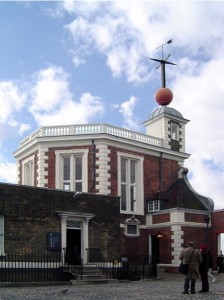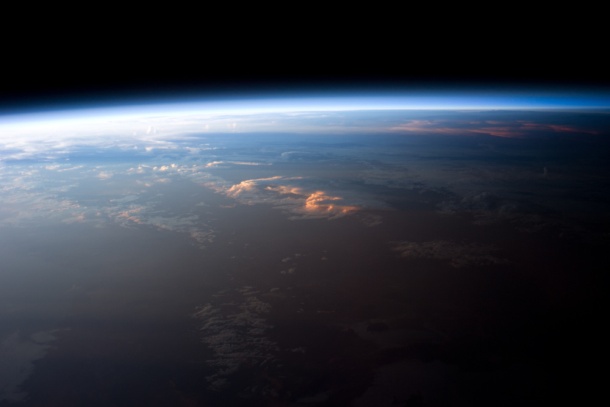Time zones are a universal standard used to mark the hours of the day in different locations. The reason time zones are necessary is to correct for the fact that, geologically speaking, people in different locations experience the hour at different “times” of the day.

The Royal Observatory in Greenwich
So just how many time zones are there? There are as many time zones as there are hours in a day: 24. This is no coincidence. The spherical Earth completes one full spin, or 360º—every day. Dividing 360º by the 24 hours in a day gives us an hourly rotation of 15º—the width of each time zone.
Both location and time are relative quantities; they must be measured in reference to a known point. The meridian of reference for time zones is called the Prime Meridian, and it begins where it ends—at the Royal Observatory in Greenwich, England, Longitude 0.º
Mapping Longitude
The demands of early industrial railroad schedules first inspired the idea of global time zones. On November 18, 1883, at noon on the dot, a handful of powerful American and Canadian railroad barons established four zones to simplify what they viewed as the hopeless chaos of local timekeeping in North America. These zones roughly correspond to those dividing North America today.
Within a year, the railroads had convened the International Prime Meridian Conference in Washington D.C., formally securing today’s 24-hour, 24-zone clock for the whole world. In the name of efficiency and clarity, hourly variations from Greenwich Mean Time, or GMT, would be marked with zones, each consisting of 15º Longitude.
GMT was modified in the 1960s for greater mathematical precision. The new system, tuned to the ultra-precise International Atomic Clock, was named Coordinated Universal Time, or UTC. For practical purposes, the two systems are considered the same, and the terms GMT and UTC are synonymous. While there are differences, they only become relevant when measuring time in fractions of a second is important.
Uniform Irregularity
For a universalized time standard, the GMT/UTC system is full of irregularities, exceptions and anomalies. It would be most useful if it were truly universal, but not all locations use the time zone system. Of those that do, most don’t use it for the entire year. Moreover, zone boundaries zigzag east and west, haphazardly tracing political boundaries and local preferences.
The perimeters of time zones resemble cracks on a fault line more than the simple, undeviating demarcations imagined by scientists. The zoning jigsaw has several localities claiming distinct fractional zones, while others split themselves into multiples.
Burma, for example, is a half-hour ahead of Bangladesh to its east, but an hour ahead of India to its west, since Indian Standard Time splits its hour between Pakistan and Bangladesh. The ‘universal’ time zone system, conceived to replace the chaos of local variation, has ironically developed into its own localized, semiarbitrary hodgepodge.
Third Rock From The Sun

Sunset as seen from the International Space Station (Photo credit: NASA)
When we tell the “time,” we are actually describing how far the planet has physically rotated on its axis for the day. Considering that Earth is a giant ball, ‘what time is it’ effectively means ‘where in the ball spin are we?’ That is, “when” an event occurs is fundamentally still a statement about “where” it takes place.
The distinction is all in our minds: Tiny humans don’t perceive Earth’s planetary-scale movement as ‘movement’ at all, but as the background flux of ’time’—movement that occurs on such a relatively large scale that it confounds the limits of human sensory perception. If it didn’t, we would quickly become overwhelmed by the thought of driving 60 mph on a planet that is spinning at over 1,000 mph and rotating around the sun at nearly 67,000 mph.